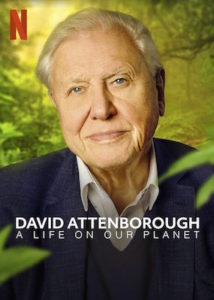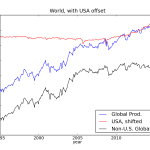
From Pixabay (Kranic17/535 images)
The year is 2050. Things are unimaginably better than anyone in 2022 might have predicted. Such turnarounds are not without precedent. After all, the boom time in the 1950s came on the heels of the Great Depression and a crippling world war against ominously dark forces. From the depths of those hard years, it would have been hard to foresee the glory days around the bend.
In our imagined 2050, climate change has been tamed by a spectacular suite of technological feats: fossil fuels are all but obsolete except in a few backwater places, replaced by an impressive profusion of solar panels, wind turbines, hydroelectric dams, thorium reactors, deep geothermal installations, and a nascent fusion industry on the verge of commercialization. Electric transport handles most domestic needs, while a bounty of biofuels powers air travel and long-haul shipping.
Breakthroughs in battery technology have resulted in large banks of lithium storage everywhere you look to smooth out the irregularities in renewable production. Seasonal-scale storage is around the corner, so that even places like Alaska will be able to satisfy demand year-round based on a massive energy haul from long summer days.
Freed from the constraints of obtaining energy from petro-states, countries are able to source all of their energy needs within their borders and in fact have more available energy than they did when dependent on primitive fossil fuels. Economies are thriving: global trade is more vigorous than it has ever been because energy is cheap and abundant.
Continued revolutions in computing power and device technology has us swimming in cool gadgets—putting something akin to Star Trek tri-corders in our hands, in contrast to the smart phones we fawn over today (mere walkie-talkies by comparison).
Abundant energy has transformed energy-intensive practices of food production and mining, so that everyone’s dietary and material needs are met, finally ameliorating hunger and gross inequity globally. Based on rising standards of living, birth rates are predicted to stabilize by century’s end so that we are on track to cruise toward a stable, peaceful, sated global regime.
In short, we’re total rock stars for having achieved a whole new phase of prosperity and amazingness. Martian colonies? Why not? While we’re fantasizing, let’s throw those in too! So yes, we are on our way to exporting our conquest to the stars and all is as it should be.
Part of me feels really crummy doing this to you. My motivation is not to be mean, really. Rather, I think it is incredibly important that we approach our future prospects realistically and understand fundamental planetary limits. So I’m afraid this is where I pull the rug out from under you. But see, I’m warning you and apologizing in advance rather than gleefully anticipating your bruising fall. Feel free to step off the fantasy on your own, if you have not already done so. Three. Two. One.
Continue reading →
Views: 22073










